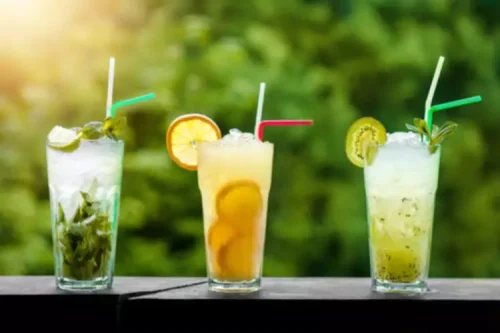Doping in sport Wikipedia
Sober living
Doping in sport Wikipedia

Within the context of substance use treatment, there are several evidence-based medications and therapy methods that have been found to be effective for these disorders. Out of the present studies, very few have explored therapeutic techniques in athletes. Motivational interviewing (MI), Cognitive drug use in sports behavioral therapy (CBT) and Contingency Management (CM) are implemented to increase motivation to decrease use and ultimately change their behaviors. There is no reason to believe these techniques and variations of such would not be successful in athletes but more studies are needed.
Athletes and Drug Addiction: What to Look For? How to Help?

The Council of Europe says it first appeared in sport at the Berlin Olympics in 1936.[42] It was produced in 1887 and the derivative, Benzedrine, was isolated in the U.S. in 1934 by Gordon Alles. Amphetamine was also used legally as an aid to slimming and also as a thymoleptic before being phased out by the appearance of newer agents in the 1950s. Doping means athletes taking illegal substances to improve their performances.

The AFL’s illicit drug policy is under fire but the bigger issue is that not all sports have one
Doping has been used to extend athletic careers, as compensation for professional athletes has soared over the past few decades. The core tenets of doping are well articulated by WADA, the World Anti-Doping Agency, the leading global ant-doping agency. These include (1) safety and well-being of the athlete, (2) fair competition and (3) integrity of sport. Alcohol, nicotine, cannabis, stimulants and prescription opioids are the most commonly used substances among elite athletes but overall consumption is lower in professional sports than in the general public [2]. Use of stimulants, prescription opioids and smokeless tobacco products has a higher prevalence in this subset of the population and use of steroids and alcohol along with smokeless tobacco was more commonly used in collegiate athletes compared to their non-athlete counterparts [3,4,5].
The Battle Against Doping in Sports
Proper treatment is the only way to divert an athlete from a path of addiction that will ruin their career and their life. Our culture expects athletes to display mental toughness at all times, and we often view struggles with substance abuse in athletes as antithetical to that expectation. Even though science has made it clear that addiction is a chronic disease of the brain, many people still believe it is a symptom of personal failure or lack of character — especially in the sports world. Individuals who abuse anabolic steroids at some point during their life are more likely to turn to other drugs. One study looked at individuals admitted to an inpatient treatment facility for opioid addictions.
- We therefore believe the present study is the first to survey the use of doping and performance-enhancing drugs in recreational sports in a larger multi-national region.
- Athletes accused of doping in ancient Greece were punished, much as they are today.
- A survey covering + 200 sports aimed at recreational athletes 15 years and older was distributed via social media to sports clubs and individuals in eight European countries.
- Performance-enhancing drugs (PEDs) are substances used to improve physical ability, notorious for their illegal use in athletic competitions.
- While the idea of injecting steroids may have seemed off-putting to all but the most driven athletes, taking a supplement that can be purchased at any health store seems less risky or even normal.
The opioid epidemic has been well-documented in the general population, but the literature pertaining to opioid use and misuse in the athletic population remains limited. 4 (complete result tables including 95% confidence intervals are provided in Additional file 2). Evidently, indirect questioning methods will add a cognitive load to respondents, which might lead to mistakes when answering [15, 33, 35]. Such mistakes (e. g. misunderstanding the randomization instruction) would lead to random false answers for both yes and no answers.
Individualized, evidence based treatment, to fit your needs.
Other online programs have found that providing web-based feedback or online modules in college athletes could lead to significant reductions in drinking, as well as improvement in assessment of social norms related to drinking [42,43]. Alcoholics anonymous (AA) and Narcotics anonymous (NA) meetings along with finding a sponsor are effective methods as well with no data in the athletic world at this time. As sport and anti-doping drive harsher policies, more invasive surveillance techniques, and push the cultural narrative around ‘clean sport’, doping groups have responded with techniques for avoiding detection and keeping overall risk as low as possible. In order to understand how enabling environments are produced we must consider those instances where the environment has been altered in order to reduce the social, political, economic, and physical risks of doping. As noted above, online doping forums may be seen as a form of user-led, ‘grassroots’ harm reduction communities, although such venues may focus on the maximisation of physical or performance benefits. Moreover, the very nature of the doping risk environments may limit the ability of individuals to effect harm reduction through mere behavioural change.
Doping in Sports, a Never-Ending Story?
However, these either concerned a specific country [9], a limited age scope [10] or focused on methodological comparisons [11]. We therefore believe the present study is the first to survey the use of doping and performance-enhancing drugs in recreational sports in a larger multi-national region. In a multisite, randomized controlled study, the rate of successful outcomes after 12 months with suboxone was under 50% and had a relapse rate of 57% whereas those treated with vivitrol had a relapse rate of 65% [45].

- This study shows that doping among European recreational athletes is what Thomas Sandøy refers to as a “low frequent phenomenon” [43].
- These estimates are consistent with several anecdotal reports in the popular press estimating that performance-enhancing drug use rates are relatively high among elite adult athletes, particular in certain sports (e.g., American football or track and field).
- Stringent guidelines and regulations can lessen the danger of doping that has existed within some endurance sports.
- Others are young and more likely to experiment with substances as they explore their boundaries.
- Products such as morphine and oxycodone are banned but the opiate-derived painkiller codeine is allowed.
A classification from S0 to S9 (Table 1) for prohibited substances and from M1 to M3 (Table 2) for prohibited methods has been developed. Many of the same pressures that drive professional athletes to alcohol and drug use also exist for student athletes. Creating a supportive environment within sports teams and organizations can help athletes feel more connected and less likely to turn to substances. Athletes may use or misuse prescription and illicit drugs for various reasons.
Amateurs and recreational athletes are included anti-doping’s remit and they may be punished in the same way as elites for anti-doping rule violations, regardless of their athletic ambitions. This reflects an individual/athlete-centred view of doping that places the policy focus and responsibility squarely on the athlete (Dimeo & Møller, 2018). Ignoring factors such as the level of competition or age of the athlete in question, further reinforces the potentially harm- and stigma-producing, punitive approach even in cases where the fair-play ideal is not really at stake.
- Over the past 45 years, great progress has been made regarding anti-doping policies but yet it continues to play a role at all levels of sporting competition.
- Still, the results show that most recreational athletes do not intentionally use substances they think are prohibited.
- From this, the estimated proportion of people in the population exhibiting the characteristic (here, respondents who intentionally used prohibited substances) can be calculated.
- To combat these side effects of anabolic steroid use, many athletes turn to anti-estrogens, which mask many of the telltale signs of steroid use.
- This pressure can lead them to abuse drugs and alcohol to gain an edge over their opponents.
- Several demonstrated reduced intake and craving and a single study looked at treatment of 11 weeks leading to an elongated latency to the first relapse [52,81,82,84].

